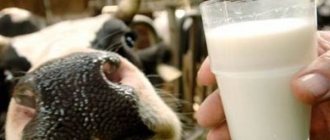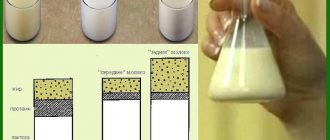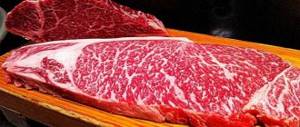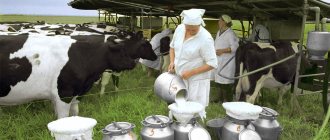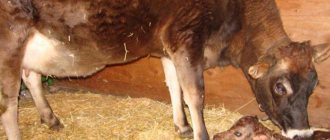Goat milk
Today, the demand for natural dairy products in cooking is growing. Recipes for dishes with goat's milk are extremely varied. You can use it to make aromatic cheese, soft butter, juicy cottage cheese, delicious condensed milk, yoghurts, kefir and sour cream. With its help, all kinds of vegetable and meat casseroles, first courses, omelets, croutons and pancakes, pancakes and pancakes, hot and sweet sauces, cocktails and even jellies are prepared. When handled skillfully, goat's milk turns into incredibly tasty cheese, which is often used as one of the ingredients in vitamin-rich salads and desserts.
These five products are most often found in recipes with goat's milk:
By diversifying your diet with dairy dishes, you can not only satisfy the most sophisticated gastronomic needs, pacify your voracious appetite, but also bring invaluable health benefits. At the same time, this unusual dish is not only tasty, but also absolutely safe for allergy sufferers. This is especially true for young children, whose bodies often do not accept cow products.
How to make sour cream and cream?
Preparing sour cream from goat milk is accompanied by certain difficulties. This is due to the peculiarity of the structure of fats, which are difficult to settle even during the separation process. Separating goat milk is necessary to obtain cream. It is difficult to make cream from fresh (fresh) milk - you should use yesterday’s chilled milk, which has been in the refrigerator for at least 12 hours.
The easiest way to obtain cream is by settling. To do this, milk is kept in a container with a wide neck; after 1-2 days it separates. A layer saturated with milk fat (cream) forms on the surface, and at the bottom there is skim milk (skim milk) of a watery consistency. It is impossible to obtain cream in large quantities in this way; in addition, a large amount of fat is lost. Therefore, electric separators are used - by centrifugation, the milk is quickly separated into two fractions. By adjusting the separator, you can achieve the desired fat content and consistency of the cream.
Goat cream can easily be turned into sour cream. To do this, you need to add starter to them. It can be any fermented milk products (yogurt, yoghurt, kefir, sour cream) or a special cultured starter that is sold in stores. After the starter has been added to the cream, it should be stirred and allowed to sit for 24-36 hours to allow microorganisms to process the cream. There is another recipe for sour cream from goat milk - the starter is added to fresh milk and left for 2 days. As a result, sour cream will form on the surface, and yogurt will form below.
Sour cream and cream recipe
Both products are prepared in three different ways. The first option is recommended for those who have not previously encountered such processes. To make sour cream you will need:
- Mix fresh milk with a small amount of sour milk.
- Pour the mixture into a clean container, cover with gauze (another cloth) and transfer to a warm room to settle for 4 days.
- Use a spoon to remove the creamy layer that has formed on top.
Goat's milk often produces less fatty sour cream than cow's milk. When preparing the product using this method, it is not recommended to move the container with the mixture.
For the second recipe you need to do the following:
- Heat the milk in a saucepan without bringing to a boil.
- Pour the liquid into a container, covering the neck with a cloth (air should penetrate into the bottle or jar).
- Leave the product for 3-5 days. During this time, the milk should ferment. In some cases, the process takes a week. During this period, do not touch the container or mix the liquid.
- Take a clean container and stretch several layers of gauze over it.
- Pour the starter into a container through cheesecloth. Depending on the volume of the prepared product, this process can take up to two hours.
- Using a blender, beat the mixture that remains on top of the gauze. If necessary, the resulting sour cream can be diluted with milk to reduce the thickness.
For the third recipe, you will need a separator, through which the cream is separated from the milk. Next you need to do the following:
- Heat the milk to a temperature of 38 degrees.
- Pour water into the separator and heat it up.
- Pour milk into the device and start rotating.
- Drain the resulting cream and repeat the procedure to remove the adhering fat from the walls.
See also
TOP 10 recipes for salad in the shape of a pig for celebrating the New Year 2019 with your own handsRead
At the end of the procedure, the cream can be used for its intended purpose or left for 12-24 hours to obtain sour cream.
Composition and calorie content of goat milk
There is an opinion that this product has a higher fat content compared to cow's milk, and if you want to lose weight, you should stop using it. The fact that the consistency seems thick is explained by the structure of the fat - it is formed into small balls and evenly distributed throughout the entire volume.
The calorie content of goat's milk is not much higher than cow's milk - 68 kcal per 100 g, of which:
- Proteins - 3 g;
- Fats - 4.2 g;
- Carbohydrates - 4.5 g;
- Ash - 0.8 g;
- Water - 87.3 g.
Vitamins per 100 g:
- Vitamin A - 60 mcg;
- Retinol - 0.06 mg;
- Beta Carotene - 0.04 mg;
- Vitamin B1, thiamine - 0.04 mg;
- Vitamin B2, riboflavin - 0.14 mg;
- Vitamin B4, choline - 14.2 mg;
- Vitamin B5, pantothenic acid - 0.3 mg;
- Vitamin B6, pyridoxine - 0.05 mg;
- Vitamin B9, folate - 1 mcg;
- Vitamin B12, cobalamin - 0.1 mcg;
- Vitamin C, ascorbic acid - 2 mg;
- Vitamin D, calciferol - 0.06 mcg;
- Vitamin E, alpha tocopherol - 0.09 mg;
- Vitamin H, biotin - 3.1 mcg;
- Vitamin PP - 1 mg;
- Niacin - 0.3 mg.
Macroelements per 100 g:
- Potassium, K - 145 mg;
- Calcium, Ca - 143 mg;
- Magnesium, Mg - 14 mg;
- Sodium, Na - 47 mg;
- Phosphorus, P - 89 mg;
- Chlorine, Cl - 35 mg.
Microelements per 100 g:
- Aluminum, Al - 22 μg;
- Iron, Fe - 0.1 mg;
- Iodine, I - 2 μg;
- Manganese, Mn - 0.017 mg;
- Copper, Cu - 20 μg;
- Molybdenum, Mo - 7 mcg.
Digestible carbohydrates per 100 g:
- Mono- and disaccharides (sugars) - 4.5 g;
- Lactose - 4.5 g.
Essential amino acids in goat milk - 1.295 g per 100 g, 12 names. Most of all lysine, leucine, isoleucine, phenylalanine + tyrosine complex.
Essential amino acids - 1.784 g per 100 g:
- Alanine - 0.121 g;
- Aspartic acid - 0.249 g;
- Glycine - 0.046 g;
- Glutamic acid - 0.594 g;
- Proline - 0.271 g;
- Serine - 0.154 g;
- Tyrosine - 0.105 g;
- Cysteine - 0.03 g.
Cholesterol - 30 mg per 100 g.
Fatty acids per 100 g:
- Omega-3 - 0.08 g;
- Omega-6 - 0.13 g.
Saturated fatty acids - 2.64 g per 100 g, 8 items. Mostly myristic and stearic.
Monounsaturated fatty acids - 1.14 g per 100 g:
- Myristoleic acid – 0.03 g;
- Palmitoleic – 0.1 g;
- Oleic (omega-9) - 0.93 g.
Polyunsaturated fatty acids - 0.21 g per 100 g:
- Linoleic acid - 13 g;
- Linolenic – 0.08 g.
When determining the quality of a product in large farms, other parameters are also taken into account. Acidity pH - 6.4-6.7 units, density - 1033 kg/m3.
When introducing a drink into your diet, you should be guided by the following data:
| Goat milk | Calorie content |
| Tea spoon | 3.4 kcal |
| Tablespoon | 12.2 kcal |
| Thin-walled glass, 200 ml | 136 kcal |
| Faceted glass, 250 ml | 170 kcal |
The beneficial properties of goat milk are preserved during short-term heating due to the high content of ionized calcium. In addition, the product can be stored at room temperature for up to 3 days. Thanks to the special composition, souring does not occur.
Goat milk condensed milk recipe
Goat milk produces delicious condensed milk that cannot be compared to store-bought milk. This delicacy can be safely given to young children in moderate quantities.
Preparation:
- Add soda to goat milk. This is done to prevent the milk from curdling.
- Add powder and oil. Mix well.
- Cook over low heat, stirring constantly.
- After the foam appears, increase the heat to medium and cook, stirring constantly. If the mass foams a lot and pours out of the pan, reduce the heat. From the moment of boiling, cook for no more than 10 minutes.
- Turn off the heat and place the container with condensed milk in cold water.
At first the mass will be very liquid. But as it cools, it will acquire a thick consistency.
The finished product should have a pleasant golden hue. The milk can be poured into a glass jar, sterilized and sealed, or you can start tasting it right away. Store in a dark and cool place.
Goat cheese recipe
Initially, you need to prepare a mixture of 250 g of sour cream and 3 chicken eggs, which should be beaten with a mixer. Taking 3 liters of fresh goat milk, bring it to a boil and add the previously prepared mixture, pouring in a thin stream and stirring. After salting the contents, the milk should be kept on the fire for no more than 5 minutes, stirring constantly, until curds form. After removing the resulting cheese from the heat, it should be transferred to several layers of gauze and squeezed thoroughly. Transfer the hot cheese to a bowl and stir it. If desired, you can add chopped basil and garlic. After letting the cheese cool in the refrigerator for 5-7 hours, you can treat your guests to it.
Beneficial properties of goat milk
The quality of the product can be assessed at the milking stage by straining through cheesecloth. If lumps appear, it means the animal has health problems, such as mastitis. In this case, milk does not have medicinal properties, and it is undesirable to eat it.
The benefits of goat milk were noticed by Hippocrates, a physician in Ancient Greece. He advised drinking it in the treatment of diseases associated with disruption of the cardiovascular, respiratory and nervous systems.
Beneficial properties of goat milk:
- Pronounced antimicrobial effect. The vital activity of pathogenic microorganisms is completely blocked.
- Increases immunity, normalizes cholesterol levels and has an anti-sclerotic effect.
- Improves liver function, prevents obesity.
- Reduces the acidity of gastric contents, prevents the occurrence of heartburn, the development of gastritis and peptic ulcers, relieves inflammatory processes in the mucous membrane of the larynx, digestive tract and organs.
- Reduces the risk of rickets in young children, osteoporosis and osteochondrosis in adults.
- Restores the quality of muscle and cartilage tissue, increases the production of synovial fluid, accelerates the regenerative properties of the body during sprains and ruptures of muscle fibers and ligaments.
- Normalizes metabolic processes, improves the functioning of the hematopoietic system, and replenishes potassium reserves.
- Restores the functions of the endocrine system and, in particular, the thyroid gland.
- It has an antioxidant effect, prevents malignancy, and stops the growth of existing tumors.
- Has a mild diuretic and choleretic effect.
- Accelerates detoxification after radio, radiation and chemotherapy, treatment with antibiotics, poisoning with salts of heavy metals and some poisons - it has been officially proven that arsenic is partially neutralized.
- Normalizes blood sugar levels and replenishes the reserve of nutrients in the body.
It is recommended to be included in the diet for the treatment of tuberculosis, polyvalent allergies and hay fever, colitis of various etiologies and bronchial asthma, arthritis and arthrosis, migraine.
Adults with lactase deficiency are recommended to switch from cow's milk to goat's milk for 2 months. In 80% of patients the disease resolves.
Homemade goat's milk diluted with water (4:1) is more suitable for babies than cow's milk, it contains less lactose. Thanks to the special structure of proteins and lipids, the product coagulates in the stomach into a loose clot, making it easier to digest. The assimilation is complete. However, in its pure form it can only be given to babies from the age of 9 months.
Fermented milk products made from goat milk prevent the development of dysbiosis and create favorable conditions for increasing the activity of beneficial intestinal microflora.
Fermented milk drinks
Goat milk is rarely used fresh for food due to its specific taste and smell. But fermented milk drinks are very popular. During the fermentation process, the unpleasant odor is lost and the nutritional value of the product increases.
Kefir
The most common fermented milk drink, which was first made from goat milk. Initially, this product appeared in the North Caucasus, then it was actively distributed throughout the Russian Empire. Since the 19th century, it has been actively used to treat diseases of the digestive system. It also has immunostimulating properties and a tonic effect. Recent studies show a positive effect on cancer and metabolic problems.
To prepare kefir you need:
- goat milk;
- leaven;
- sugar (no more than 1% of volume).
Special bacterial preparations are used as starter culture. At home, you can use store-bought kefir. To prepare, you need to heat the milk to 35 degrees or use a steamed product.
Milk must be mixed with starter and sugar and mixed thoroughly. Next, you need to cover the container with a cotton cloth or several layers of gauze - it is important to provide air for microorganisms to multiply. Kefir is infused for 8-10 hours in a dark room at a temperature of 17-22 degrees. When exposed to light or other temperature conditions, the technology is disrupted and the kefir spoils.
Yogurt
The usefulness of yogurt was proven by Mechnikov back in the 19th century; since then, studies have confirmed an increase in immune status and improved functioning of the digestive system with daily consumption of fermented milk products. Goat yogurt is rich in amino acids, protein, vitamins, calcium and potassium. It normalizes intestinal function, promoting the growth of normal microflora.
Characteristics of goat milk yogurt:
- viscous homogeneous consistency;
- bright fermented milk pleasant aroma and taste;
- white color without inclusions;
- fat content – 3.8-4.5%;
- protein content – not less than 2.9%.
Fresh milk is used to make yogurt. It must first be pasteurized (sterilization is allowed) followed by cooling. Before adding the starter (culture of Bulgarian bacillus and streptococcus), it is necessary to bring the temperature of the milk to 40 degrees.
It is important to maintain a constant temperature so that the growth of microflora in yogurt does not stop, otherwise pathogenic microbes will develop, which will lead to spoilage of the product. The yogurt takes 3-5 hours to prepare; the longer it is kept, the higher the acidity will be. To stop the growth of bacteria, you need to refrigerate the yogurt. Then it can be stored in the refrigerator, but no more than 5 days.
Whey and reverse
These products are waste from the production of cheese, cottage cheese and cream, but are also eaten in their pure form, or as ingredients for various dishes (dough). In terms of nutritional value, they are much inferior to regular milk or fermented milk drinks made from it. Thus, there is practically no milk fat in the skim milk - during the process of producing cream it is separated to a greater extent.
Whey usually does not contain protein, since most of it remains in cottage cheese or cottage cheese. But if these products are prepared from skim milk (that is, skimmed milk), then the whey contains only traces of fat and protein. These drinks are not much more nutritious than water.
But whey can be used to restore the functioning of the digestive system - it has a beneficial effect on acidity, promoting the growth of good microflora. The drinks also contain vitamins and microelements. Goat whey and skim milk can be used to make good baking dough. And their main value lies in their low cost.
Recipes and recommendations for preparing dairy products
To get a good quality product, you need not only to adhere to the exact recipe. Every experienced housewife has her own tricks and secrets that allow her to make the final product more tender or ensure good storage. To give a special taste to butter or cheese, the recipe may include the use of additional ingredients.
Oil
There are a lot of different recipes that make it possible to obtain goat milk butter at home, here is one of them. For this you will need goat's milk, add salt if desired. To get the oil you need:
- Take freshly milked milk and then boil it immediately.
- Then you need to pour it, use a low bowl, and leave it like that for a while.
- The milk should cool down and reach room temperature.
- Immediately after this, it is moved to a colder place, where the goat’s milk should stand for two days. During this time, the cream will separate and rise to the top. They are collected, and from them the butter itself is made by beating.
Goat milk butter
can be whipped in different ways. Some use a mixer for this, experienced owners have a butter churn, but if neither one nor the other is at hand, then beat the butter by hand. Alternatively, you can fill a three-liter jar with cream, close it tightly with a lid, and shake until the oil separates. When you have completely whipped it, just drain off the whey and rinse the resulting product. There are several cooking secrets: to make the butter salty, use salt, and add saffron to give it yellowness.
Tovorog
To replenish calcium reserves, you need to consume foods rich in this microelement, one of them is cottage cheese. The preparation process is not complicated, and the main advantage is that nothing other than milk is required. This recipe can also be used if the milk has been standing for a long time, it begins to taste sour, that is, it has begun to sour, and this is the first stage of preparation.
Goat milk curd
To get cottage cheese you will need sour goat's milk, if it is not sour in itself, and you decided to get it on purpose, then to speed it up you should put it in a warm place. As soon as this process is completed, you need to use several layers of gauze onto which the sour milk is poured. Its size directly depends on the amount of milk. The diagonally opposite ends of the gauze are tied together to form a kind of knot. Hang it up for a while and let the excess liquid drain. One day is enough for the serum to completely drain.
There are fans of cottage cheese, which does not contain even a drop of moisture; in order to do this, you additionally need to place the knot under a press so that the liquid can drain. To do this, just place a heavy object on the bundle of cottage cheese for several hours and you can enjoy the finished product.
Cream, sour cream
Goat milk cream can be obtained using a separator. One of the options for obtaining them is to heat the milk to a temperature of 40-45 ° C; it is believed that at this temperature they separate better and are also thicker. Some housewives do not open the separator tap completely so that the milk does not flow so quickly. Essentially, this is the entire cooking process. You can get cream easier by leaving the milk in the jar for a while. After a few hours, the cream will rise, it can be drained by filling a separate bowl, and then used for various purposes.
Goat milk cream
Goat milk sour cream is not just tasty, it is also healthy, improves digestion, contains vitamins and microelements. A small amount of cholesterol helps prevent the formation of plaques in blood vessels. In addition, making sour cream is not difficult, the only drawback is that it requires a lot of milk. To get sour cream from goat milk in an amount of 500 g, you need to use 10 liters of milk.
Sour cream is made from collected cream. They need to be left in a warm place for a while so that the product sours. Sometimes a few hours are enough for this, sometimes it takes days. After this product has acquired its usual taste, store the sour cream in the refrigerator, there it will thicken a little, and you can only distinguish it from the store-bought one by its natural taste.
Goat milk sour cream
If you don’t have a separator, but want to try sour cream, you can prepare it in another way. A small amount of sour milk is added to fresh milk, covered with a piece of gauze and allowed to stand at room temperature. After 3-4 days, a visible layer will appear at the top of the jar; this is sour cream. It is collected with a spoon into a separate bowl and stored in the refrigerator.
Products made from sour milk or with its addition
And although many may think that a spoiled product should be thrown away immediately, some do just that with sour milk. But you can get various products from goat milk only when it begins to sour.
Kefir
There is a simple recipe for making goat milk kefir at home. You need to boil fresh milk over low heat, let it cool, 35-40 minutes will be enough. After this, add a little ready-made kefir, which can be bought at any store, and mix the resulting mass thoroughly. Let it stand at room temperature for 48 hours, then cool it a little in the refrigerator, the kefir is ready.
Yogurt
This product can be prepared according to the same principle as kefir, but some housewives use a different recipe for fermenting yogurt. For 500 ml of chilled boiled milk, take 2 tbsp. l. sourdough Let it sit for a day, the product is ready. To make homemade goat milk yogurt as similar as possible to store-bought yogurt, add jams, berries, and fruits.
Ryazhenka, curdled milk, whey
You can get whey, yogurt or fermented baked milk from both cow's milk and goat's milk. For example, to make fermented baked milk from goat milk, you need to add a little sour milk to the baked milk and wrap the vessel, after a couple of hours the product will be ready.
To get the goat's milk curdled milk ready, you need a minimal amount of effort and a little time. Sourdough is added to cooled previously boiled milk, it can be a spoonful of sour cream and allowed to stand in a warm place for 12 hours. It is advisable to drink it a day before, as the product may deteriorate.
Goat milk whey does not require special preparation; it is rather a by-product. This is the water that drains when preparing cottage cheese or feta cheese.
Condensed milk
Condensed milk from goat's milk is very tasty and nutritious, and most importantly, by preparing it in this way, you can be sure that there are no harmful additives. Take fresh milk and add a little soda to it, literally on the tip of a knife, so that it does not curdle during the cooking process. Add granulated sugar to the milk and cook over low heat until it begins to change color; when it reaches golden color, remove the product from the stove. You can’t eat condensed milk right away, but make small reserves; it’s poured into jars and sterilized under iron lids. This product is stored in the cellar.
Kumis
To prepare kumiss from goat milk, take a liter of low-fat milk, a glass of water, 3 tsp. sugar, 2 tbsp. l. kefir and 5 g of yeast. Whisk all the ingredients except the yeast and leave for a while in a warm place. Separately, yeast is diluted with warm water and a pinch of sugar so that its consistency resembles sour cream, all this is added to the milk and mixed. Pour the product into bottles and leave for half an hour. When gases have formed, you need to move it to the refrigerator, the product is ready.
Cheese
Now there are several recipes for making cheese, each of them differs in additional components. Goat milk cheese is also prepared according to this recipe. Pour milk into a saucepan, put on low heat, add a spoonful of cottage cheese. After a while, add a tablespoon of salt, let it boil a little, and then add sour cream, also a tablespoon. Wait until the whey begins to drain during the cooking process, then place the product in cheesecloth and put it under a press, after an hour the cheese is ready. Cheese cheese at home turns out to be very tender and tasty; some housewives make mozzarella cheese from goat’s milk.
Goat's milk cheese
Blade cheese made from goat's milk
Goat's milk cheese
To prepare blade cheese, which came to us from Belarusian cuisine, you will need the following ingredients:
- 5 liters of goat milk;
- 1 crust of bread;
- salt and cumin to taste.
Preparation:
- The milk simmers for up to 14 hours at room temperature.
- Already sour, it is placed in the oven, preheated to 100 degrees. Fireproof cookware is used.
- The exact time spent in the oven is not indicated, it all depends on the product. You need to independently monitor the moment when the curd separates from the whey.
- To add a spicy taste, salt and cumin are added to the wedge cheese.
- The cottage cheese is placed in a bag made of thick fabric and hung over the container: this way the excess liquid drains.
- When all the whey has drained, the curd in the bag is pressed in a cold place, that is, placed under any heavy object (up to 8 kg).
- After two days, the cheese is ready to eat. Before serving, it is sprinkled with grated bread.
Goat curd
Goat cottage cheese
The classic recipe for cottage cheese is quite simple:
- First you need to get the milk sour. If you put the liquid in a warm place, it will take about 3-4 days. After this, the mixture is poured into an enamel pan and placed on the stove over low heat.
- As soon as the liquid comes to a boil, the fire is turned off and the contents are poured into another container, filtering it through gauze or a thin cloth. If the milk boils, the cottage cheese will turn out hard.
- A bag is made from gauze and hung to drain excess whey. After 2 hours, the cottage cheese is ready to eat.
Recipe for sour cream:
- Take 2 liters of goat's milk and 1 tablespoon of sour cream (also goat's).
- Milk is poured into a dry vessel, sour cream is added, stirred, covered with a cloth and left for 8 hours.
- The sour mixture is placed in a water bath until the curdled milk separates from the cottage cheese.
- The cottage cheese is filtered as in the previous recipe.
Be sure to read:
How much milk does a goat give: what does it depend on, how to increase it, what to do if it’s lost
Goat milk in cosmetology
The undoubted benefits of this product for external use are explained by the presence of collagen in the chemical composition. Goat's milk is often a component of industrial skin care cosmetics - shampoos, hair conditioners, face creams. Buyers note the effectiveness of such compositions. You can also take care of your body using homemade cosmetics - masks. A bath is especially beneficial for the body - just add about five hundred milliliters of milk to the water and you can:
- improve the epidermis;
- relax;
- eliminate fatigue.
The peculiarity of self-prepared products is the need for long-term and regular use - applying once and leaving it on longer than the recommended time will not be enough. The first results on the hair or face should be assessed after at least four weeks from the first procedure.
Action on hair shafts:
- softness;
- elimination of flaking and dandruff;
- reduction of cross-section;
- recovery.
Impact on the facial epidermis:
- elimination of peeling;
- nutrition;
- hydration;
- rejuvenation;
- tone equalization.
The composition of masks should be selected based on the existing problem, the type of hair or dermis of the face, the presence or absence of contraindications.
Here you can buy Bielita shampoo-cream Professional line: Goat milk for weak and brittle hair.
Hair Mask
Suitable for all types of strands. To prepare you will need:
- goat's milk/consistency;
- oatmeal/two tablespoons.
Preparation: Heat the milk, pour the milk over the cereal and leave for five minutes to swell. Stir, you should get a slurry similar in consistency to thick sour cream.
Application: Rub into the epidermis of the head for two minutes, distribute the residue throughout the curls. Cover first with a plastic bag, then with a terry towel. Keep for at least thirty minutes. Rinse off with water and shampoo. Do not use a hair dryer for drying.
Result: Healthy-looking strands, reduced cross-section.
Mask for the face
Suitable for all types of epidermis. To prepare you will need:
- goat milk/thirty grams;
- liquid honey/fifteen grams.
Preparation: Place the milk in a water bath, heat it no higher than forty degrees, add honey, stir.
Application: Clean the dermis of cosmetics using a cleanser, steam, apply a scrub, following the instructions for use. After deep cleansing, spread the mask in an even layer, excluding the area around the eyes. Keep for no more than twenty minutes, remove with warm water.
Result: Moisturizing, nutrition, preventing early aging.

